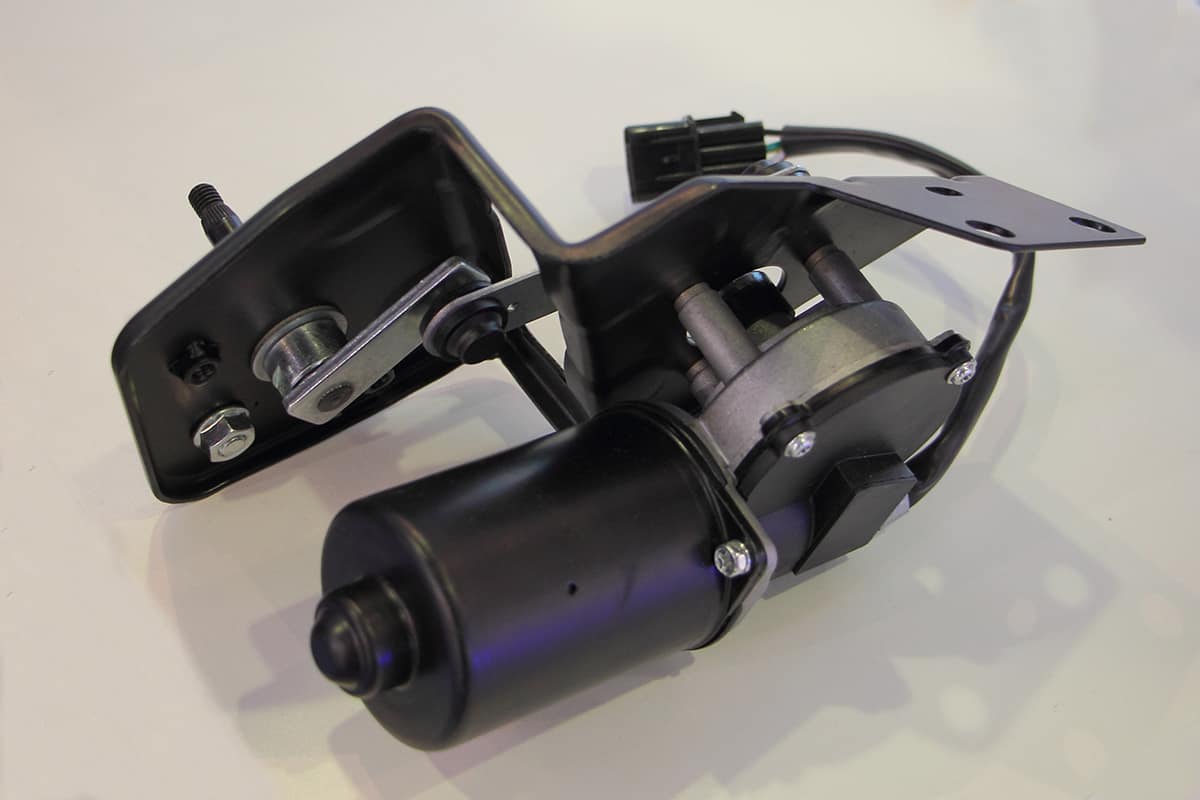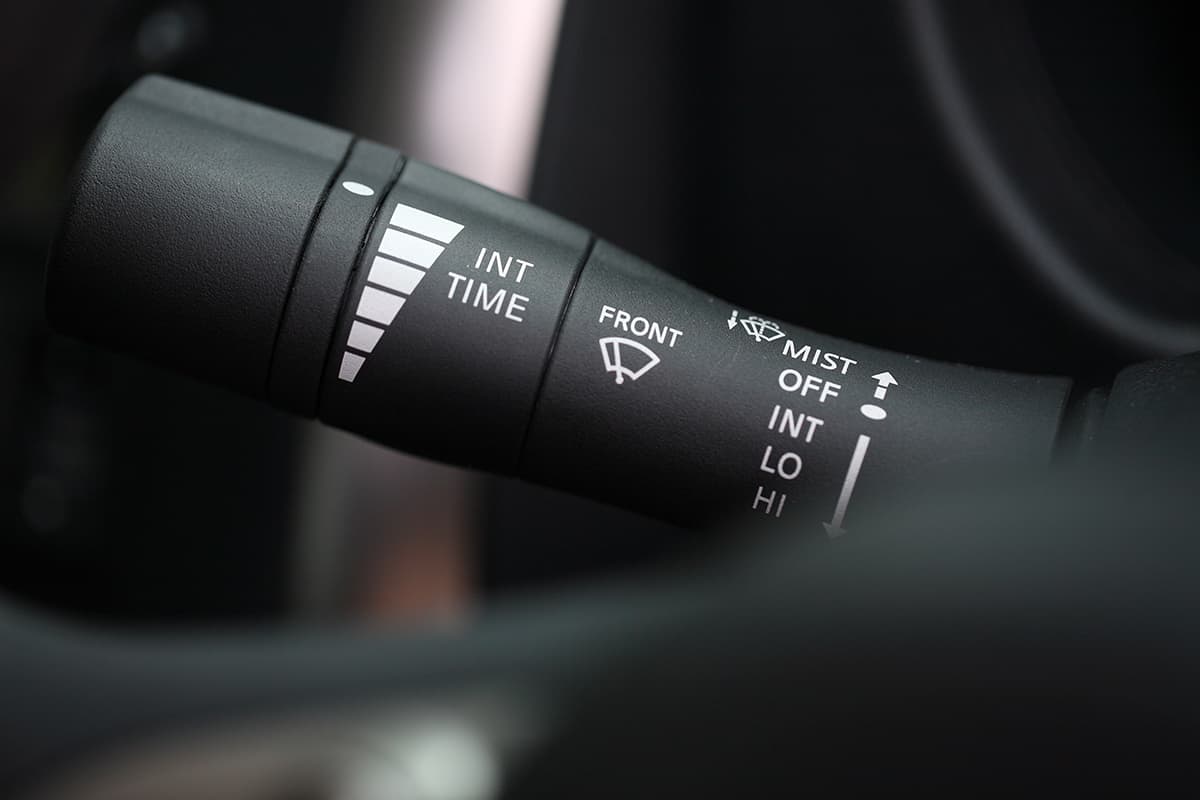Imagine it being a sunny day without a cloud in sight but your F150’s windshield wipers won’t stop. No matter how many times you try to turn them off, the wipers keep going up and down, up and down. What is the cause behind this?
Any of the following causes could be behind your Ford F150’s windshield wipers not stopping:
- Faulty wiper park switch
- Faulty wiper motor
- Wiring issues
- Faulty windshield wiper switch
- Faulty wiper relay
- Faulty steering control stalk
In this guide, I’ll explain what these issues are in more detail and how to diagnose certain windshield wiper problems.
How Do Windshield Wipers Work?
Motor power mechanisms that wipe back and forth across the windshield make driving inclement weather much more bearable. The motor is usually operated via a dashboard-mounted switch or lever and is powered by the car’s electrical system.
Power from the motor is transmitted to the wiper mechanism, which in turn propels the wipers across the windshield when the wipers are activated. The linkage between the wipers and the wiper mechanism transforms the rotational motion of the motor into the reciprocating motion of the wipers.
Windshield wipers use rubber blades due to the materials’ resilience and effectiveness in removing water, snow, and other road debris. To keep the windshield clear and the driver’s view unobstructed no matter the weather, the wipers are made to be both adaptable and sturdy.
The wipers on most vehicles can be set to different speeds depending on the weather and the driver’s preference. In addition to a constant wiper cycle, some vehicles feature an intermittent wiper function.
When the wipers are turned off, the park switch tells the motor to stop and park the wipers in the correct position. When the windshield wipers are disabled, the park switch is triggered, which is typically located on or near the wiper motor.
In order to keep the windshield clear and the driver’s vision unobstructed, windshield wipers must be regularly serviced by having their blades replaced as they wear out.
F150 Windshield Wipers Won’t Stop—Causes and Solutions
If you can’t turn off the windshield wipers on your Ford F150, the cause could be any of the following.
1. Faulty wiper park switch
When the wipers are turned off, a wiper park switch instructs the motor to stop and park the wipers in the correct position. When you turn off your windshield wipers, you also flip the park switch that is usually located on or near the wiper motor. In the event that the wipers are turned off, the switch will send a signal to the wiper motor, instructing it to stop the wipers and park them in the appropriate position.
If the park switch is broken, the wiper motor may not receive the instruction to stop and park, resulting in the wipers’ continued operation even after the switch is disabled.
2. Faulty wiper motor

A windshield wiper motor is an electric motor that drives the mechanism that wipes the windshield. A switch or lever on the dashboard activates the wiper motor, which is powered by the car’s electrical system.
There are a few different ways in which a broken wiper motor will prevent the windshield wipers from stopping. If the wiper motor, for instance, loses power, the wipers won’t stop moving. The wipers may move more slowly than usual or stop working altogether if the wiper motor is malfunctioning.
3. Wiring issues
Power for the wiper motor and park switch is carried by the electrical wires attached to the windshield wiper mechanism. The battery or fuse box is the typical starting point for these wires, which continue on to the wiper motor and the park switch. Electricity must be sent through the wires to operate the wiper motor and the park switch.
If the wiper motor’s power cables are corroded or frayed, the motor might not get enough juice to stop the wipers. Similarly, if the park switch’s wires to the wiper motor are frayed, the switch might not be able to transmit the signal to the wiper motor to turn off.
4. Faulty windshield wiper switch

In most cars, the switch that activates the wipers can be found on the dashboard or the steering column. It sends a signal to the wiper motor, telling it when to start and stop. The switch has a number of different positions, including off, on, low, medium, high, and intermittent.
In several situations, the wipers won’t stop working because the switch that controls them is broken. In the case of the windshield wipers, if the switch is stuck in the “on” position, it will continue to send a signal to the wiper motor, causing the wipers to continue to operate even after the switch has been turned off.
5. Faulty wiper relay
An electrical component called a wiper relay functions as a switch to manage current flow to the wiper motor. When the wiper switch is engaged, power is transferred to the wiper motor, allowing the wipers to begin or end their operation. Your car’s relay is probably in the fuse box or the electrical control module.
If the relay is stuck in the “on” position, the wiper motor will receive power even when the switch is off. It’s also possible that the wipers will keep running if the relay isn’t doing its job and is unable to cut power to the wiper motor.
Additionally, if the wipers are working sporadically or not at all, it may be due to a faulty wiper relay. In order to maintain clear visibility while driving and to prevent further damage to the wipers or the wiper motor, a faulty wiper relay must be diagnosed and replaced without delay.
6. Faulty steering control stalk
A vehicle’s windshield wipers, turn signals, and headlights can all be operated from a stalk mounted on the steering column. Off, low, medium, high, and intermittent are some of the settings and positions the stalk typically offers for the windshield wipers.
If the wiper stalk is accidentally left in the “on” position, the wiper motor will continue to receive the signal to keep spinning even if the stalk is turned off. It’s also possible that the wipers won’t stop when you want them to if the stalk isn’t working properly.
How to Diagnose Windshield Wiper Problems
Instead of examining every possible issue, it’s a good idea to pinpoint the problem to a specific cause. If you want to diagnose the problem, you’ll need a Ford scan tool.
When diagnosing windshield wiper issues, a Ford scan tool can be more effective and time-efficient than doing so manually. Using a Ford scan tool, you can do the following to figure out what’s wrong with your wipers:
- In most modern cars, the diagnostic port can be found under the dashboard, where you can plug in the scan tool.
- Get the car started by inserting the key into the ignition and activating the wipers.
- Using the scan tool, get the diagnostic trouble codes (DTCs) for the windshield wipers. The wiper motor, relay, switch, or other associated components may be the source of the error message.
- The scan tool’s data stream can tell you whether or not the wipers are getting power, their current speed, and whether or not they are in the park position.
- After making repairs and clearing the DTCs, you should retest the wipers to see if the issue has been resolved.






